Best Android Smartphones 2014: Your Favorite Devices And The Features That Made You Love Them
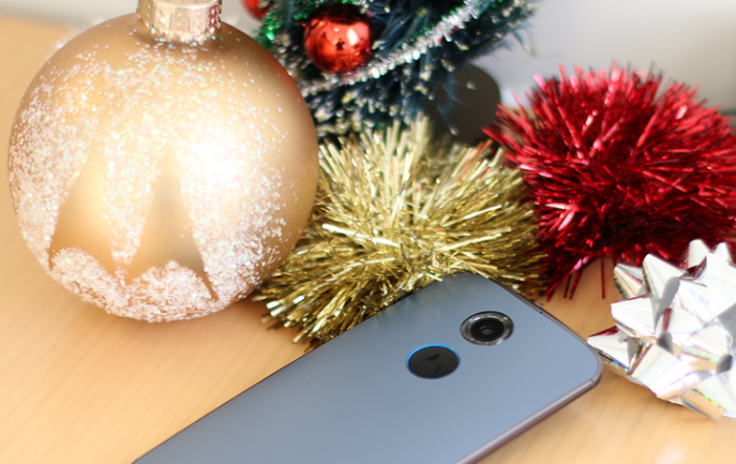
While it may seem to most consumers that all smartphones are pretty much the same -- and for Apple users, they are -- Android phone manufacturers brought a diverse array of hardware to the market in 2014. The theme of the year was standout features, including large (and even curved) displays, water-resistant designs and powerful cameras. Manufacturers competed fiercely to win the favor of consumers, and many handsets stood out for very specific reasons. Below is a rundown of the best Android devices of 2014 and their best features.
Best Bargain: Motorola Moto G 2014
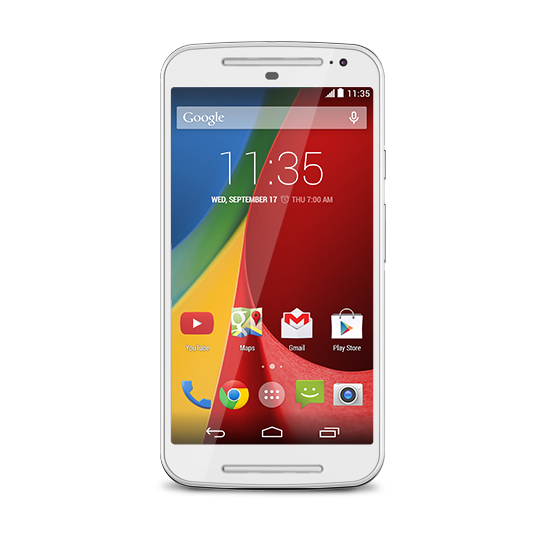
Many consumers follow the crowd and opt for a high-end smartphone with an equally high price tag. But the Motorola Moto G is not only affordable at less than $200 off-contract, it also includes all of the features that users need for a solid smartphone.
The Moto G includes a quad-core Qualcomm Snapdragon processor, a 5-inch HD display, 1GB of RAM and 8GB of internal storage with Micro SD expansion up to 32GB. The smartphone also features an 8-megapixel rear camera and 2-megapixel front camera, stereo sound with dual front-facing speakers and the Android 4.4.4 KitKat operating system. The device is also waterproof and provides up to a full day’s use out of a single charge.
The Moto G sells unlocked for $179 through Motorola online. Carriers offering the device include AT&T for 99 cents with a two-year contract, Sprint for $79.99 off contract and Verizon for $99.99 off contract.
Best Battery: Motorola Droid Turbo

Motorola has released many battery-focused devices, and this year’s iteration is the Droid Turbo, which features a massive 3,900 mAh battery that runs for up to 48 hours. For comparison, the 2013 Motorola Droid Maxx featured a 3,500 mAh battery that could also maintain performance for up to 48 hours, but the Droid Turbo has an added feature: Motorola’s Turbo Charger support that can power the device for up to eight hours after a 15-minute charge.
The Verizon-powered Droid Turbo has a rugged Kevlar back, meaning this smartphone won’t bend from a drop or two; it’s also water-resistant and able to withstand up to 20 minutes in a downpour. The Droid Turbo features a 5.2-inch QHD display, a 21-megapixel rear camera with 4K video recording and a 2.1-megapixel front camera.
The Droid Turbo sells for $199.99 with a two-year contract and is available exclusively with Verizon. The smartphone can also be purchased through Verizon’s Edge equipment installment plan or off-contract for $599.99.
Best Design: HTC One M8
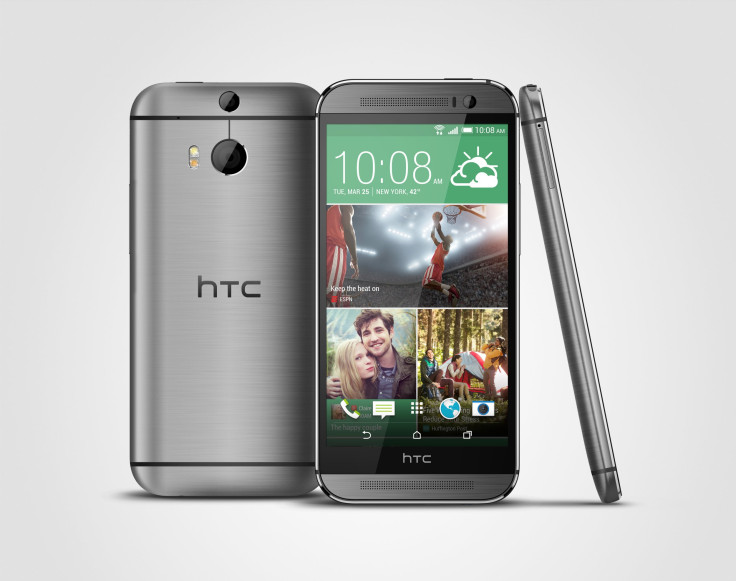
HTC is accustomed to rave reviews about the sleek metal designs on its flagship smartphones, and the HTC One M8 is no different. The smartphone is made of 90 percent metal; its only nonmetal areas are at its top and base to allow for antennae transmission. For comparison, the 2013 HTC One M7 is 80 percent metal. Does that mean that the rumored HTC One M9 could be close to 100 percent metal? We don’t know, but currently the M8 offers the most beautiful industrial design on the market.
Behind the screen, the HTC One M8 includes all of HTC’s staple features, including applications such as Blink Feed, which congregates all social media and news updates into one area, and Zoe, which lets users make short music videos out of photographs.
The HTC One M8 sells unlocked for $649 through HTC online. Carriers offering the device include AT&T, Sprint, Verizon and T-Mobile, which have subsidized pricing at about $199.99 and varying equipment installment plans.
Best Gimmicky Features: Samsung Galaxy Note Edge
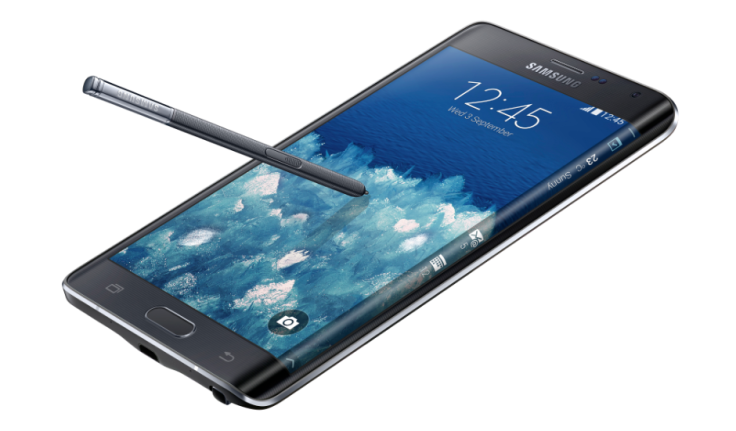
Samsung loves to think outside of the box when it comes to smartphone features. With the Galaxy Note Edge, the manufacturer thought right off the screen. The smartphone is definitely unique in terms of looks. While a few manufacturers have experimented with curved and flexible displays, consumers heretofore had never seen a device with a screen that curves around the right edge of the phone.
The curve provides extra screen real estate for users, allowing for interruption-free controls and relegating notifications and other functions away from the main screen. The edge screen is also good for placing favorite app shortcuts for easy access. When turned off, the edge screen turns into an alarm clock and illuminates at night.
The Galaxy Note Edge is a phablet, much like that the Samsung Galaxy Note 4 and also includes Samsung’s trademark S-Pen stylus and a leather textured back.
Carriers offering the Samsung Galaxy Note Edge include AT&T, Sprint, Verizon, U.S. Cellular and T-Mobile, which have subsidized pricing between $399.99 and $429 and varying equipment installment plans.
Best Phablet: Samsung Galaxy Note 4
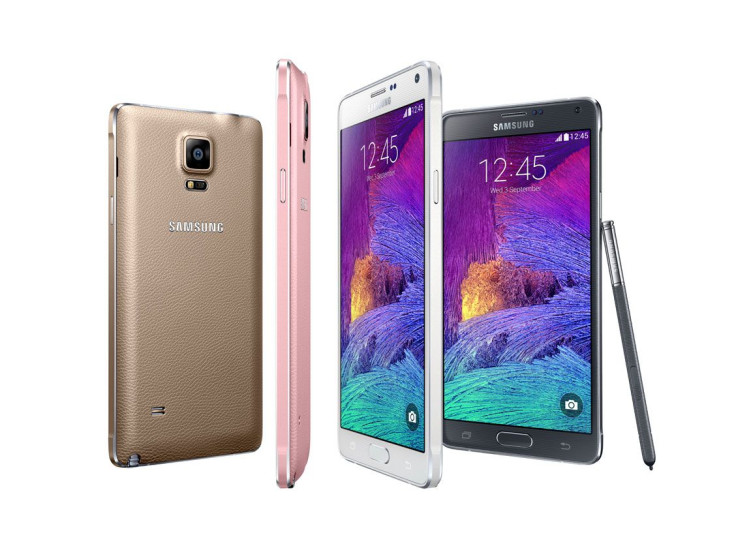
In 2014, Samsung made it a point to remind the market that it was the manufacturer that started the phablet craze. Consumers saw companies such as Apple and Google, which are known for smaller phones, exceed their screen size thresholds to introduce their own phablets to the market, but the Samsung Galaxy Note 4 holds its own as a highly desirable large-screen smartphone.
Samsung maintained the 5.7-inch display size it introduced in the Galaxy Note 3 but increased the Note 4’s resolution to QHD (2560 x 1440) and added metal to the device’s design for a more premium look.
Users will find the Note line’s standard S-Pen stylus on the Galaxy Note 4; the stylus’ sensitivity has been increased from 1,024 levels on the Note 3 to 2,048 levels on the Note 4. Samsung says the added sensitivity allows the Galaxy Note 4 S-Pen to detect movements made as far away as 12mm from the screen. Other notable updates on the Galaxy Note 4 include its 16-megapixel camera, which can also shoot video in 4K resolution.
Carriers offering the Samsung Galaxy Note 4 include AT&T, Sprint, Verizon, U.S. Cellular and T-Mobile, which have subsidized pricing for about $299.99 and varying equipment installment plans.
Best User Experience: Motorola Moto X 2014
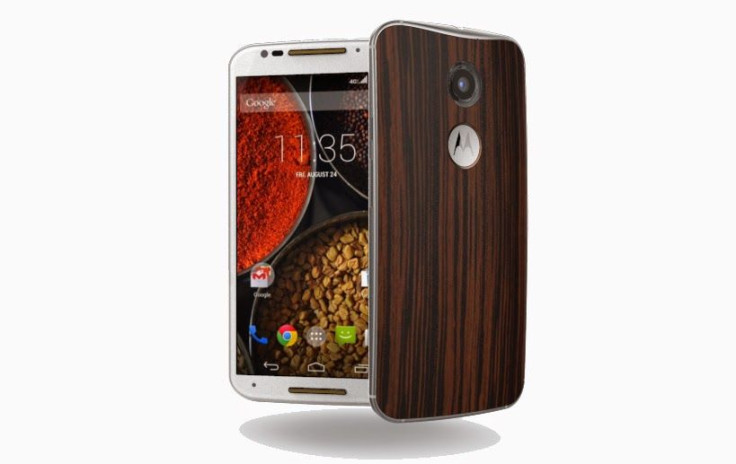
Motorola has truly made a business of developing devices that actually stand out as smartphones (with an emphasis on smart). Similar to the original Moto X before it, the Moto X 2014 has mastered the art of touchless and gesture controls. The user interface on the Moto X 2014 is as close to stock Android as you can get without being a Nexus device, but the features added by Motorola have many hailing the Moto X as one of the best smartphones on the market.
These features include Moto Voice, which is Motorola’s touchless control, the company’s take on Apple’s Siri, if you will -- the difference being that users actually utilize Moto Voice. Users can personalize their device name instead of using the standard “OK Google.” A user can launch functions such as the camera app by saying “take a selfie”; the app will start, set to the front-facing camera and initiate a countdown timer before taking a photo.
Moto Assist adjusts functions on the Moto X 2014 depending on the time of day; shutting itself down if the user is in a daily meeting, for example. Moto Display prompts important notifications as a user needs them, and Moto Actions prompts set functions when users gesture over the Moto X’s display and IR blaster.
The Moto X 2014 is also water-resistant and its design is customizable. Owners can design the Moto X according to their specifications, which include choosing a black or white front, a back made of leather, wood or solid colors and different metallic colors for the trim.
The Moto X sells unlocked for $499 through Motorola online. Carriers offering it include AT&T and Verizon, which have subsidized pricing at about $99.99. Prices may vary depending on how the Moto X 2014 is designed; the leather and wood backs costs $25 extra.
Best Waterproof Phone: Sony Xperia Z3
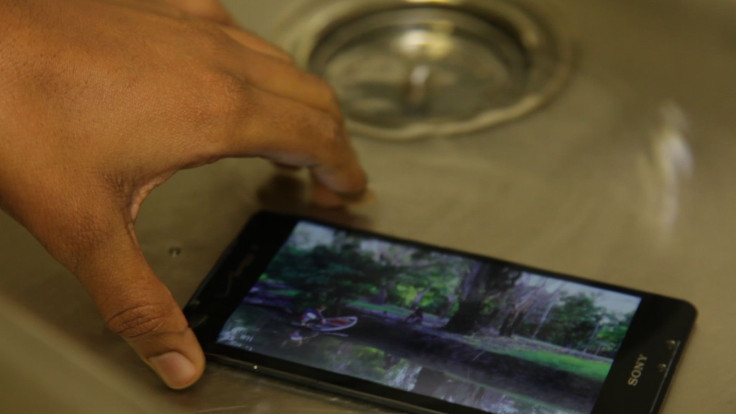
Sony isn’t a consumer’s first choice for smartphones, but it probably should be, for those who are accident prone. The Sony Xperia Z3 is in compliance with the IP65 and IP68 dustproof and waterproof ratings, the highest on the market, which allows users to operate the device in up to 1.5 meters of fresh water for up to 30 minutes. Users can continue functions such as playing video or taking photographs while the Xperia Z3 is underwater.
As a Sony smartphone, the Xperia Z3 also has a prominent gaming component. The device allows those with PlayStation Network accounts to log in and download and play mobile games on their handsets.
The Xperia Z3 also takes design cues from PlayStation consoles, giving it a sleek, premium look. The smartphone features live home screen wallpaper; it may seem like your standard Sony background, but once you're finished going through the home screens, keep swiping and the animation keeps going.
The Xperia Z3 sells for $629.99 at T-Mobile. At Verizon, the device goes by the name Xperia Z3v and sells for $199.99 with a two-year contract.
Best Camera Phone: Google Nexus 6

While many consumers may be enamored of the gargantuan 5.9-inch QHD display on the Nexus 6, one of its most standout features is its stellar camera. The 13-megapixel camera on the Nexus 6 easily rivals the iPhone 6, which could have been the pick for best camera phone, had iOS devices been included on this list. Unfortunately for Apple, Google had stepped up its photography game exponentially.
Users that scowl at bloatware will also appreciate the stock Android user experience on the Nexus 6, which runs Google’s latest Android 5.0 Lollipop operating system. The software includes new themes such as Material Design, notification upgrades and major battery improvements.
The Nexus 6 sells at the Google Play Store (on Wednesdays) and through Motorola online for $649. Carriers offering the device include AT&T, T-Mobile and Sprint, which have subsidized pricing at about $249.99 and varying equipment installment plans.
© Copyright IBTimes 2024. All rights reserved.





















